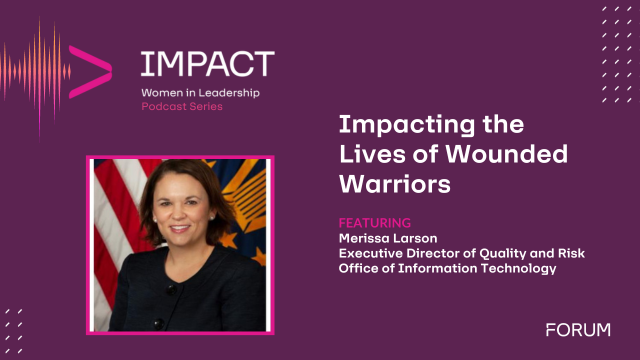By Katie Bergmann
During a recent scuba diving excursion, I began to think about the similarities between successful diving expeditions and the corporate cultures that promote victories for IT project implementations. I realize these two topics may seem quite unrelated at first glance. After all, addressing legislative issues, balancing the implementation of new systems while still relying on legacy structures, and igniting a forward-thinking mind-shift is hardly a day at the beach. However, whether your organization is making the dive of transforming your Healthcare delivery services or facilitating an agency’s dive, there are some shared connections to the actual underwater activity. Let’s see if a page from the scuba divers’ playbook to ‘Plan, Navigate, Communicate and Take a Break’ is your ticket to driving results.
#1: “Plan Your Dive, And Dive Your Plan”
Scuba divers create a meticulous and detailed plan for each dive. To ensure a safe, enjoyable, and successful outing, the dive location (project goal), water depth (what phase of the project is this and how far this phase will go) and time underwater (length of time to achieve the goal) are agreed upon. The environmental conditions (any legislative factors that may influence the work), and the certifications (any new skill sets or processes that will be required) and experience level (additional training as needed) of the members of the dive party are assessed. All equipment is checked for proper functioning (ensure new technologies have proof of concept) and the air tanks must be full (the model must be scalable). Someone remains in the boat to monitor conditions and assist divers (ensure decision making is clear so course corrections can be made quickly and confidently). Once the dive begins, the agreed upon plan is implemented.
Are you “planning the dive and diving the plan” with respect to IT projects?
- How does this project fit with your mission and strategic goals? Can you explain what you are hearing from key stakeholders (users, clients, internal / external customers and relevant regulatory agencies) about the need for this change?
- What are your enterprise-wide priorities for both the short and long term? How do you plan to devote resources to achieve these goals?
- What does the composition of your workforce need to look like for success? What are the capabilities and capacities of the individuals and teams? Where are the gaps and how will you fill them?
#2: Underwater, There Are No Street Signs
Even on days with good visibility, navigating underwater can be challenging for divers regardless of their experience. It is very easy to get distracted by beautiful sights (shiny new technologies) and engaging sea creatures (companies who seem to be over-promising), especially in the hunt for the best possible underwater photo (mission outcome). To stay on course, divers set their compasses (a specific end goal) to point them in the right direction. They use landmarks (milestones that will chart the path) for navigation and pay attention to the angle of the light reflected by the water (watch for signs that that course correction is needed). Each of these activities are safeguards that a dive party is headed in the right direction.
Are you prepared to stay on course?
- Has your organization defined specific end goals before
 diving into this project? Is each employee empowered as an active contributor to keeping the team on course?
diving into this project? Is each employee empowered as an active contributor to keeping the team on course? - How will you measure success for this project? What are the milestones that will help the organization stay focused?
- How will this project stay on track despite other organizational priorities that may arise?
#3: You Can’t Talk, Text or Email Underwater/Communicate
While divers may not be able to talk, text or send emails underwater, communication is vital to safe diving. A diver low on air or in distress must have a way to communicate (ensure your team knows that if they are in trouble they can and should ask for help). And positive communication is important too. When a diver can share sightings of sea-life, for example, everyone can share in that success (have a way to share milestones and insights to celebrate the victories to keep everyone motivated and focused on the mission).
Divers use a mutli-pronged approach to communicate effectively:
Talk topside
 There are several commonly understood hand signals learned during scuba certification. Before diving in, teams agree on mutual and critical signals to avoid any confusion.
There are several commonly understood hand signals learned during scuba certification. Before diving in, teams agree on mutual and critical signals to avoid any confusion.
- How are you discussing and agreeing upon methods of communication in a clear and easily understood manner?
- How are team members contributing to continuous improvement in communications?
Be Obvious and Get Acknowledgment
Divers make sure that there is always a clear line of sight and that their signals are seen, and more importantly, understood. Nothing is assumed. Instead, all communications are to be acknowledged (make a habit of checking for clarity) to ensure the divers are in sync throughout the dive.
In her book How to Say Anything to Anyone, A Guide to Building Business Relationships That Really Work, author Shari Harley shares that “In the absence of knowledge, people fill in the blanks. And it’s never good.” She encourages asking questions, lots of them, to take the mystery out of working with others and to build and strengthen relationships.
Harley advocates learning how to give and receive effective feedback – both positive and negative. Generic feedback “Ray is good team player and works really hard” is nice but not very useful. On the other hand, if Ray knows exactly what actions he took that make him a great team player, he is more likely to repeat that behavior. And if you want people to get really defensive, give them vague feedback indicating improvement is needed but fail to provide examples. Harley proclaims that “Anytime feedback can be interpreted in more than one way, it’s too vague.”
Harley provides a feedback formula that includes describing the observed behavior, sharing the impact or results of that behavior and making suggestions or requests that include other approaches the person might consider in the future.
Welcome New Divers
New divers are continuously joining the world of underwater exploration and experienced  divers are joining new groups or creating new partnerships (adding new team members, integrating technology or agency partners) all the time. Since divers truly depend on each other for the sake of safety, it’s imperative that new-comers are made to feel welcome and are educated in the hand signals (acronyms, terminology specific to the group) and protocols of the team.
divers are joining new groups or creating new partnerships (adding new team members, integrating technology or agency partners) all the time. Since divers truly depend on each other for the sake of safety, it’s imperative that new-comers are made to feel welcome and are educated in the hand signals (acronyms, terminology specific to the group) and protocols of the team.
Onboarding new team members is much like welcoming new divers. Whether there is an addition to your team or your client’s team, providing an opportunity for everyone to get acquainted can accelerate the creation of synergy on or among teams. Breakfast is quickly becoming a popular way to get the team or teams together. The energy created by sharing the first meal of the day carries right into the work of the day. For team members who find after work events inconvenient because of family or other obligations, morning get-togethers may offer a great opportunity to feel included.
#4 Surface Intervals/Take a Break
Divers need to take breaks – both to fill their air tanks and rest their bodies between dives. Diving can be physically demanding (long hours, approaching deadlines), and the body needs time to release the nitrogen (stress) that it naturally absorbs throughout each dive. It is critical to take breaks and not doing so may cause serious illness (employee burn-out).
The result of not planning for employees to surface and re-charge often manifests as high levels of employee stress, burn out and turnover. Time lost on the project or the loss of institutional and project knowledge and the effort required to play catch up can undermine even the best team’s vision of success. There may be a loss of connection with a partnering agency or a client and the passion for the mission, goals and values the team has espoused may be challenging to recreate midstream. Workplace stress causes physical, emotional and behavioral difficulties for employees and according to the 2017 Stress in America survey by the American Psychological Association:
- Workers experiencing a recent organizational change are four times more likely to report experiencing physical health symptoms at work.
- Occupational stress costs U.S. employers an estimated $300 billion annually through absenteeism, illness, and reduced productivity.
How are your employees able to take surface breaks especially during that final push towards a project milestone?
With deadlines looming and time-sensitive tasks mounting, the need for surface intervals may be greater than ever, yet even more elusive. This is a good time to recognize that there is no one size fits all break.
- Quick stretch breaks can provide that quick burst of energy to rev up productivity. Even five minutes of stretching your arms, shoulders, back and neck a few times a day can relieve tension and get blood and oxygen flowing.
- Give the eyes a break from the computer screen with the 20-20-20 rule – every 20 minutes, look at something 20 feet away for 20 seconds.
- Social interactions are good for people and productivity. Scheduling time to attend networking events allows people a chance to connect, recharge and often walk away with new ideas or a fresh perspective on a recurring challenge.
If your organization’s past experiences with major change initiatives included ‘burn-out’ as an unwelcome caller, consider how that can be prevented. Provide channels in your project plan to release any potentially toxic pressures and anticipate circumstances that may prevent your team from taking a break so that you can prepare to address these issues.
So, now, armed with this formula from the divers’ playbook – Plan, Navigate, Communicate and Take a Break – who’s ready to ‘dive in’ and transform Healthcare delivery services or facilitate that process for an agency?
 Katie Bergmann is Founder and President of Piko Resources, LLC, an organization dedicated to igniting positive and productive work environments through culture innovation, integrated change management and leadership development.
Katie Bergmann is Founder and President of Piko Resources, LLC, an organization dedicated to igniting positive and productive work environments through culture innovation, integrated change management and leadership development.
She has over 20 years’ experience as an executive serving both the for profit and not-for-profit sectors, working across multiple business disciplines from business development and sales/marketing to information technology, finance, human resources, and operations. She has extensive experience with Executive Boards, Boards of Directors, strategic partnerships, and merger and acquisition integrations. She has earned the designation of Energy Leadership Index and Leadership Development System Master Practitioner. Katie was named one of the 2017 Trending 40 – Top Association Innovators.












